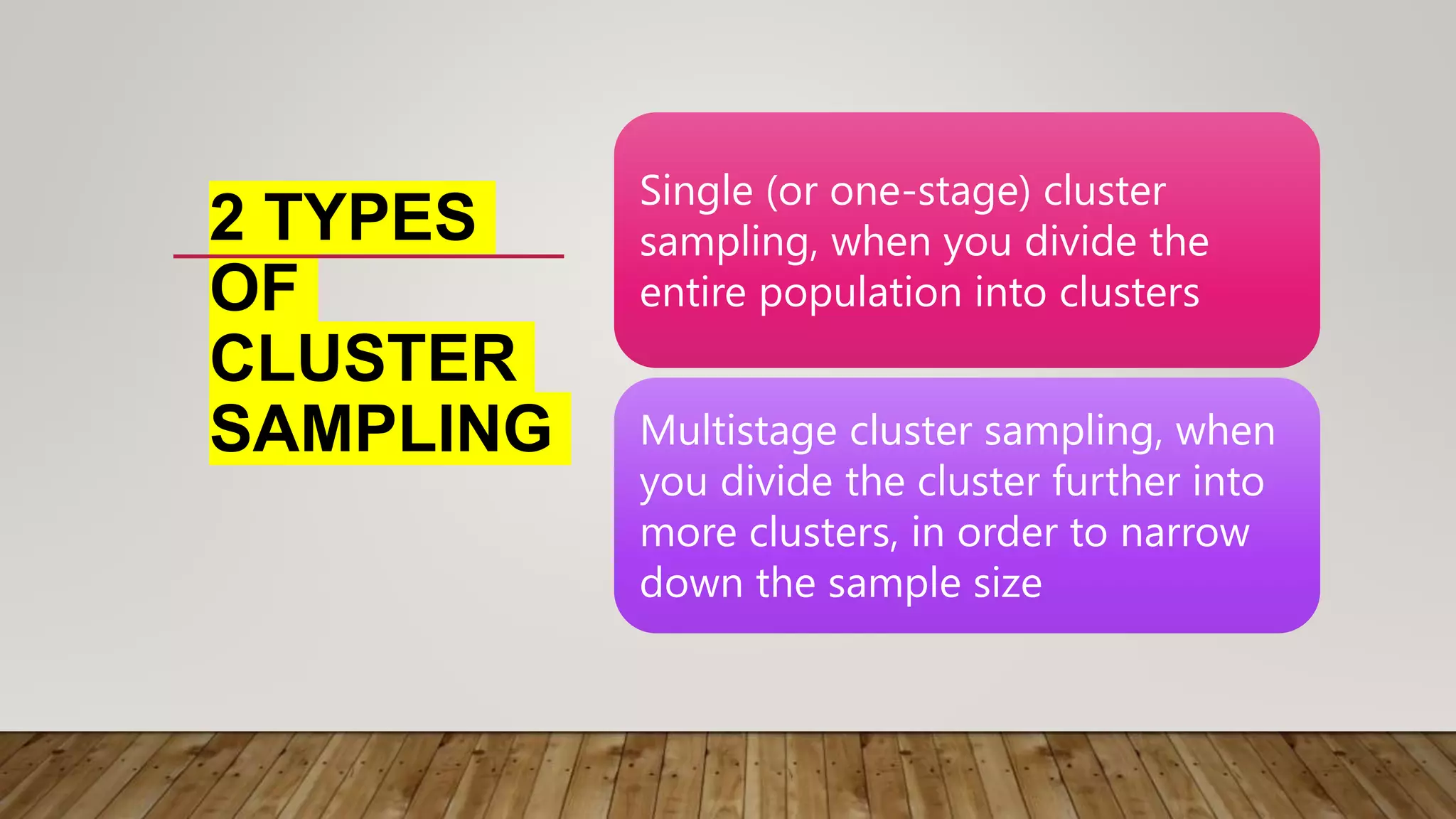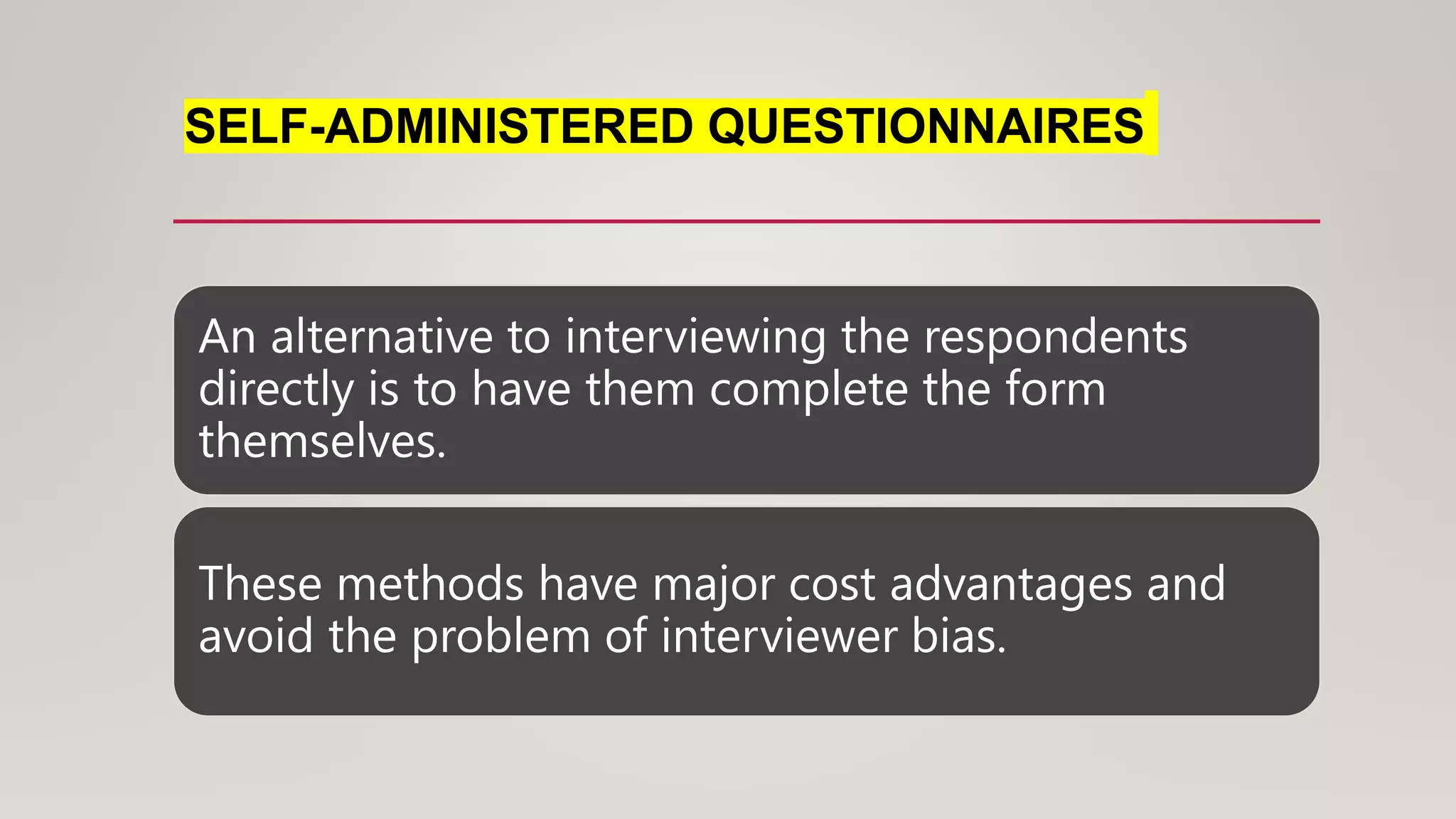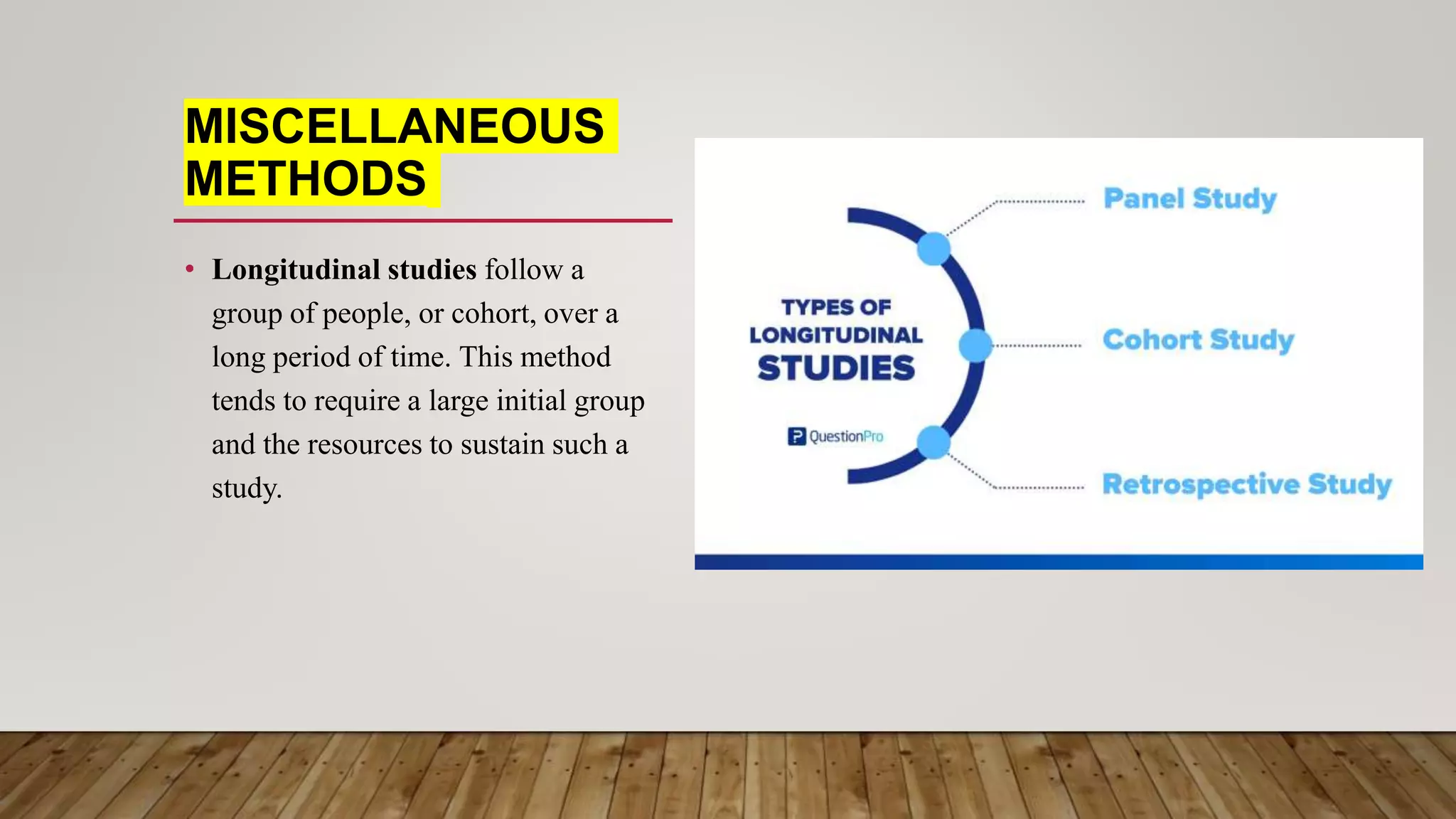This document discusses various quantitative survey methods used in research including probability and non-probability sampling. It describes survey methods like simple random sampling, stratified sampling, systematic sampling, and cluster sampling which are types of probability sampling that select participants randomly. Non-probability sampling methods like quota sampling, judgmental sampling, snowball sampling, convenience sampling, and consecutive sampling are discussed. The document also covers survey design elements like interviewer-administered questionnaires, telephone and self-administered surveys, panel studies, observation methods, and factors to consider for questionnaire design like advantages, disadvantages, and addressing non-response.




































